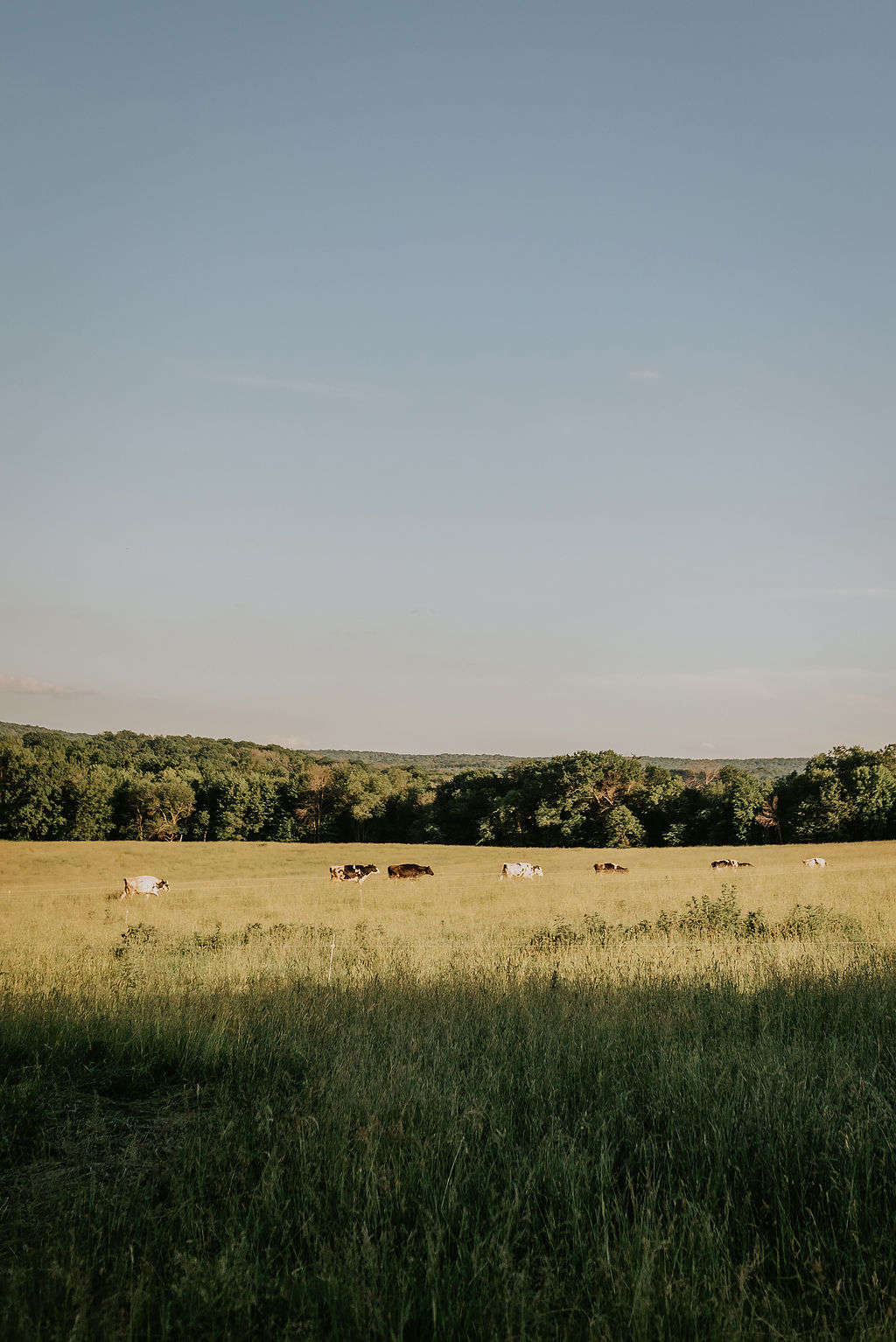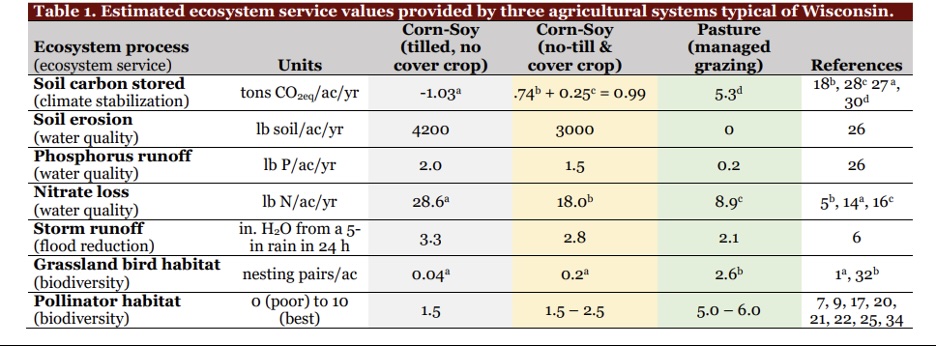Deep Roots
This farm is in the Baraboo Hills region of Wisconsin, a unique ecosystem comprising one of the most ancient rock outcrops in North America. Much of the region is still wooded, with durable rock called Baraboo quartzite underneath oak, maple and basswood.
This farm is on the slope of one of the Baraboo hills, with woodland on the higher border and a wide-open expanse looking down into the valley below. Because the landscape made it difficult to farm conventionally, in 1988, the current farmer’s dad transitioned the farm to a New Zealand style managed rotationally grazed dairy farm. At that time, no one in the University of Wisconsin or county ag offices knew anything about managed dairy grazing. Developed in New Zealand because of the temperate climate and topography of the land, managed grazing is an approach to dairying that focuses on keeping cows on pasture, but this isn’t your grandfather’s grazing!

There is a lot of innovation that has come with managed grazing. Cows are moved to new paddocks with fresh grass as often as every 12 hours, which is possible because of moveable polywire fencing. By doing this, the cows are always eating fresh grass with peak nutritional value and they aren’t in the paddock long enough for the grass to get trampled. By the time they make it through a series of paddocks, the grass has recovered, and they are fertilizing the paddocks as they graze! Cows can do this year-round in New Zealand. In Wisconsin, managed grazing operations have barns where they can stay warm in the winter and cool in the summer.
The process of managed grazing cattle on perennial pasture is a powerful way to restore depleted soils, keeping soils intact, protecting from runoff, and providing habitat for nesting birds and pollinators. The Natural Resources Conservation Service (NRCS) includes managed grazing as an approved practice in its conservation and farming programs. According to research done at the University of Wisconsin, it also produces the highest benefits of all regenerative farming practices.

On this farm, there are 40 paddocks that are laid out like a wagon wheel, with the milking parlor and a free stall barn in the middle. The pastures are perennial grasses and legumes that have been intact since 1988. With that many years of cows aerating the soil with their hooves, fertilizing the pastures with their manure, and the deep roots of the grasses bringing up nutrients, this farm can graze 60 cows on 60 acres or pasture. They use organic total mixed rations (TMR) to supplement their grass intake. They have a New Zealand style milking parlor that makes it easy for cows to move through the parlor, making it possible for one person to milk 60 cows. When they’re in their free stall barn, the cows lay on waterbeds that keep them cool in the summer and warm in the winter. The combination of cows on pasture with fresh grass and exercise, and a comfortable indoor environment, keeps the herd healthy.

While this is not a research farm, because this farm has been in managed grazing for almost 40 years, it is window into the cumulative ecosystem services benefits that occur when these practices are followed over a long period of time.
To learn more about the Baraboo Hills region of Wisconsin, see:
For more information on the ecological benefits of managed dairy grazing, see:
University of Wisconsin, Grasslands 2.0, “Well managed perennial pasture: Setting the Gold Standard for Ecosystem Services, FINAL-Ecosystem Services Fact Sheet, 2022.
For a Scientific Review of Grass Based Dairy Systems and Benefits, see:
Moscovici Joubran A, Pierce KM, Garvey N, Shalloo L, O’Callaghan TF. Invited review: A 2020 perspective on pasture-based dairy systems and products. J Dairy Sci. 2021 Jul;104(7):7364-7382. doi: 10.3168/jds.2020-19776. Epub 2021 Apr 15. PMID: 33865573.
A note about our photos: We are excited to use photos to connect you to the farms that supply milk for your Organic Squeaks so you can learn about the wide range of eco-active practices they use. Unless noted otherwise, these photos were taken on this farm by a photographer who is also one of our farmers. We respect the culture and privacy preferences of our farm partners, which is why you won’t always see people in our photos.

